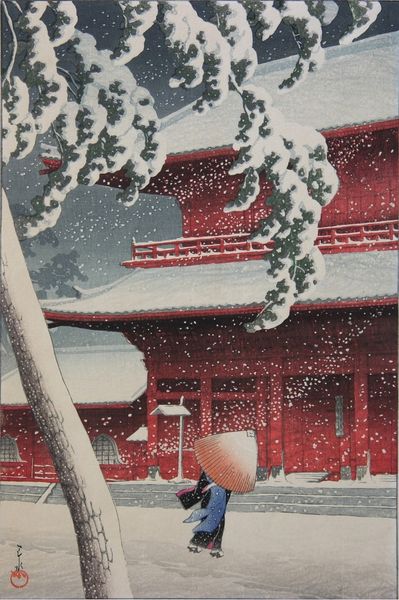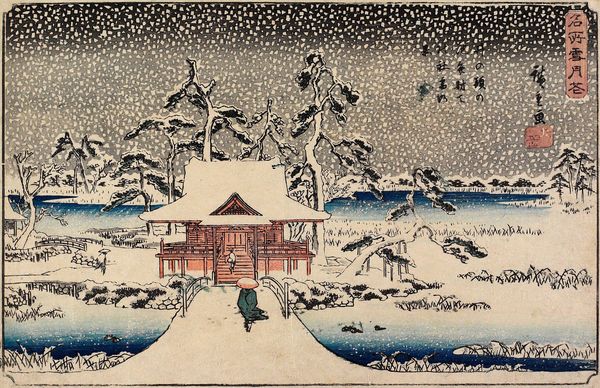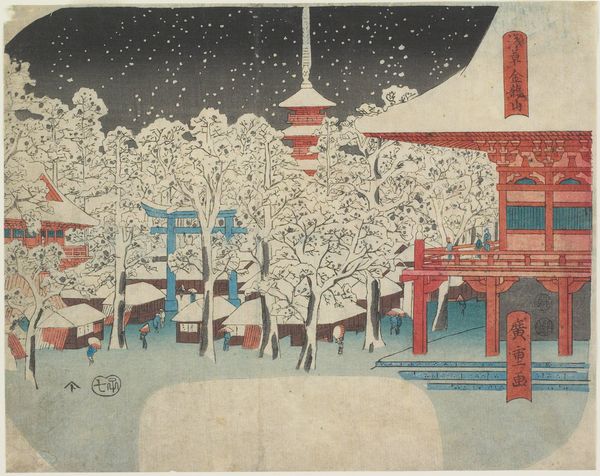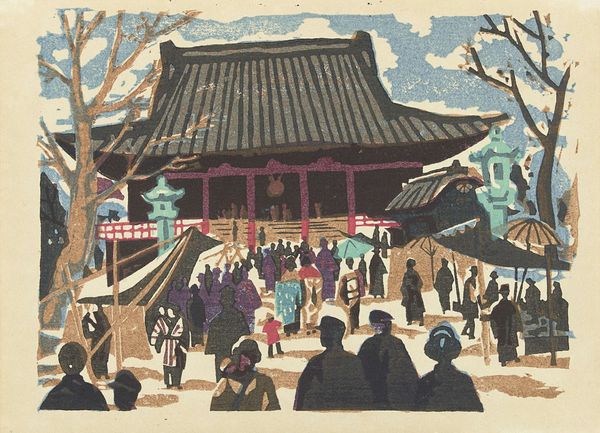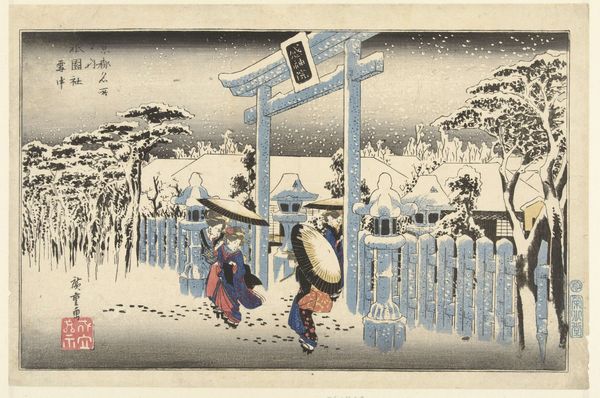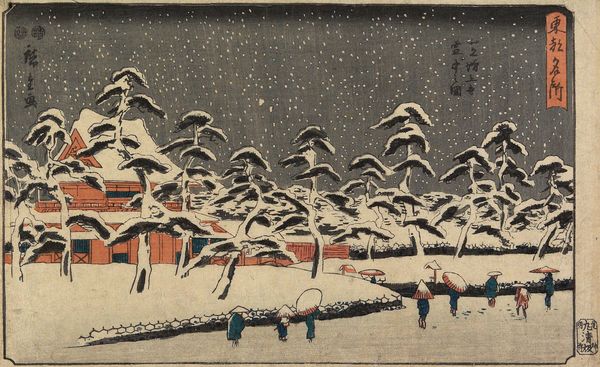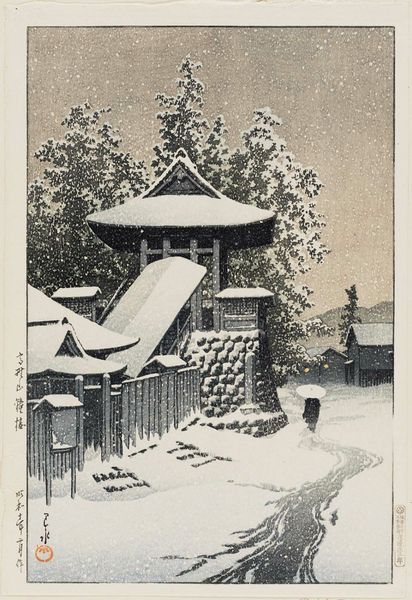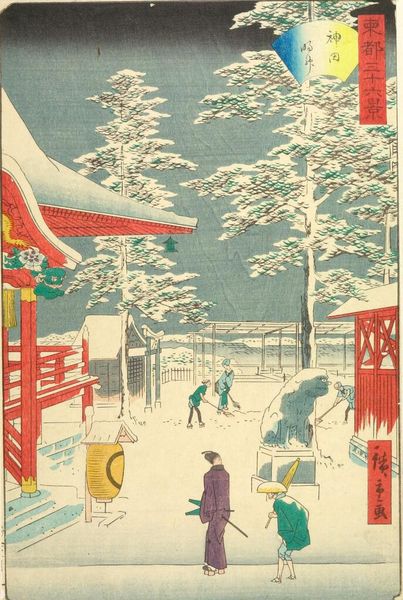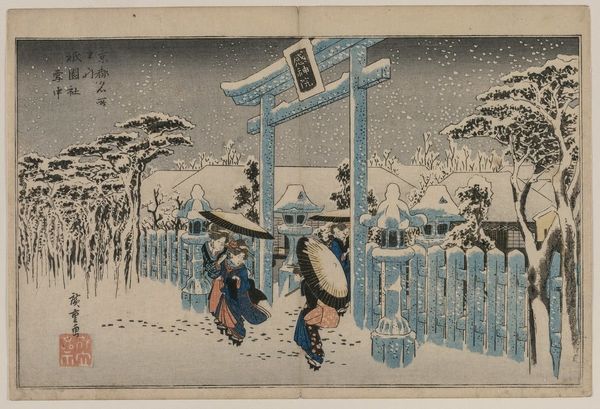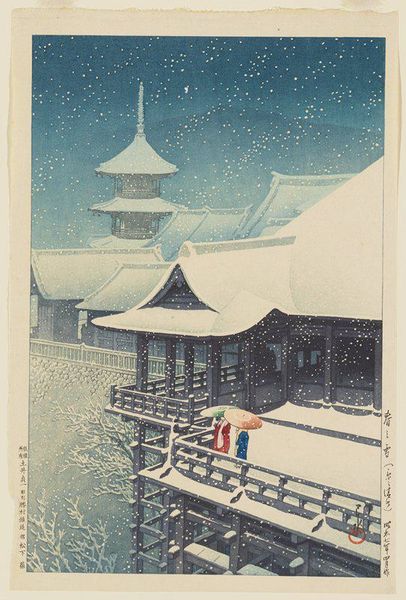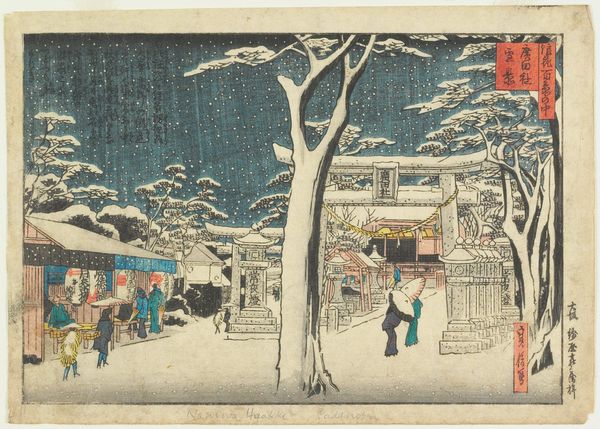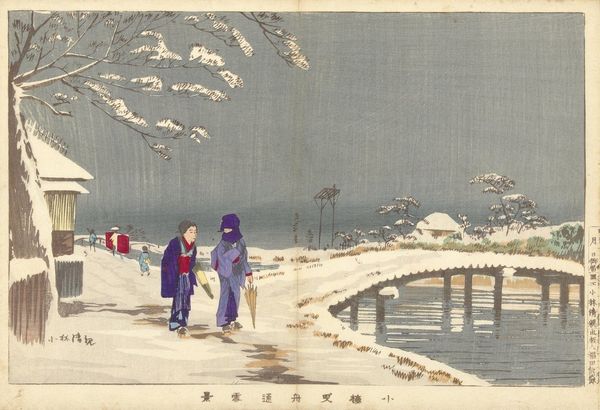
Copyright: Public Domain: Artvee
Editor: This is "Heavy Snow at Tōshōgū Shrine in Ueno" by Kobayashi Kiyochika, a woodblock print from 1879. It's so striking how Kiyochika captured the stillness and quiet of the snow falling. It's beautiful but almost melancholic. How do you read this image? Curator: Kiyochika’s work provides a fascinating lens onto Japan’s rapid modernization during the Meiji era. Woodblock prints, traditionally depicting idealized landscapes or historical scenes, were now capturing contemporary life. This image showcases that shift by depicting everyday people in a public space, with an atmospheric natural event. What statement might this suggest about societal values? Editor: So, he is choosing an everyday subject, even as the shrine itself is still sacred? That feels like an acknowledgement of how daily life was shifting. I am wondering if prints like these helped to form or reflect a new national identity, perhaps one blending tradition with modernity. Curator: Exactly! And consider the *location*: Ueno Park was one of the first Western-style parks in Japan. By placing the traditional Tōshōgū Shrine *within* that setting and in the context of a modern art form like *ukiyo-e* prints adjusted to the times, Kiyochika subtly highlights the negotiation between Japan's past and its future. Editor: It’s incredible how much historical context is embedded in what at first seems like just a pretty snow scene! Now, the choice of location, the style…they all speak to something bigger about Japan's transformation. Curator: Indeed. Reflect on how the commodification and wide distribution of woodblock prints contributed to democratizing art. Also consider their use as a form of national branding and soft diplomacy during a period of intense cultural exchange. These were accessible images for many and for a global market. Editor: I never thought about ukiyo-e prints that way – beyond the surface level. This really sheds a new light on their cultural role! Thanks so much! Curator: My pleasure! It is key to appreciate how art interacts with broader society and political power dynamics, which also adds more richness to viewing pleasure.
Comments
No comments
Be the first to comment and join the conversation on the ultimate creative platform.
